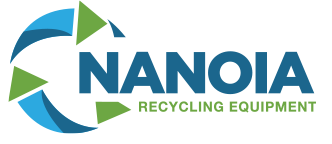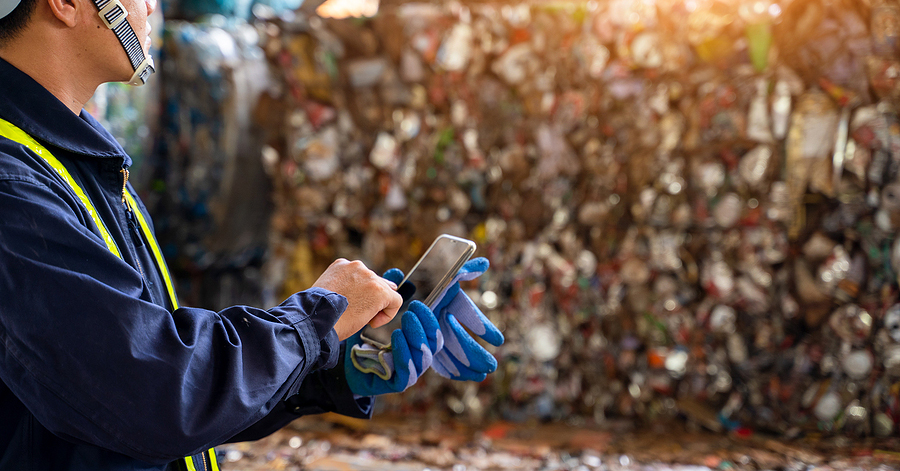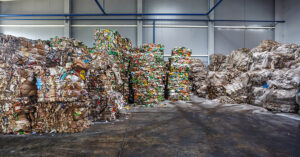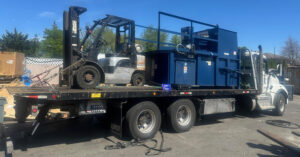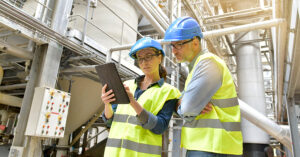Balers are powerful, efficient tools in recycling and waste management, but they also come with inherent risks if not operated safely.
For businesses that use industrial recycling equipment, knowing how to safely operate a baler is essential to protect employees, maximize productivity, and ensure compliance with safety standards.
Here, we’ll cover the best practices for safe baler operation and maintenance, helping you establish a safe, efficient work environment.
Understanding the Types of Balers and Their Safety Features
There are various types of balers used in the industry, each with specific purposes and safety features. Vertical balers, which are compact and ideal for smaller spaces, are commonly used for materials like cardboard and plastic. Horizontal balers, on the other hand, are larger and suited for high-volume recycling facilities.
Most modern balers come equipped with crucial safety features like emergency stop buttons, interlocks, and safety guards. Emergency stops provide a quick way to halt the machine in case of malfunction, while interlocks prevent the machine from operating if a gate or panel is open. Safety guards protect operators from dangerous moving parts.
Choosing the right baler with these safety features suited to your material and volume needs can significantly enhance the safety and efficiency of your operations.
Pre-Operation Safety Checklist
Before using a baler, it’s essential to complete a safety checklist to ensure the equipment is ready for safe operation.
- Inspect the Equipment: Conduct a visual inspection, checking for any signs of wear, leaks, or damage, particularly in the hydraulic system and belts. Verify that all guards and safety features are securely in place.
- Verify Power Source: Ensure that the electrical connection is stable and the machine is properly grounded. Loose connections can lead to electrical hazards or machine malfunction.
- Personal Protective Equipment (PPE): Operators should wear appropriate PPE, including gloves, safety goggles, hard hats, and steel-toed boots. Some baler types and materials may require additional PPE to prevent injuries.
Step-by-Step Guide to Safe Baler Operation
Loading the Baler
To safely load a baler, operators must follow proper loading techniques. Overloading is a common issue that can strain the equipment and lead to jams, so adhere to recommended load limits for each material. Place materials evenly within the chamber to allow for a balanced press.
When loading, keep hands and limbs clear of the baler chamber, and avoid directly pushing materials inside. Instead, use tools or a push stick to maintain a safe distance from the machine’s moving parts.
Activating the Baler
Proper activation of the baler includes using the safety controls to avoid accidental startups. Always engage the interlock switch, which prevents the machine from starting unexpectedly. In case of malfunction, operators should immediately use the emergency stop to halt the process.
Monitor the baling process to identify unusual sounds or delays, which may indicate a mechanical issue that needs attention.
Removing Bales Safely
Once the baling cycle is complete, ejecting the bale safely is vital. Stand clear of the bale ejector, as unexpected movements may occur. Use safe lifting practices or a forklift to transport the bale to storage or shipping, avoiding rough handling to prevent it from breaking apart.
Maintenance Best Practices for Baler Safety
Regular maintenance is key to the safe and efficient operation of a baler. Daily maintenance includes cleaning the baler chamber to prevent material buildup, which can lead to jams. Operators should also check hydraulic fluid levels to ensure smooth operation.
Weekly and monthly maintenance should include a more detailed inspection of hoses, belts, and seals for wear and tear. Regular testing of emergency stops and interlocks ensures that these crucial safety features remain fully operational. Keeping a maintenance log helps track all upkeep activities and identify recurring issues before they become major problems.
Training and Operator Certification
Training is a critical component of safe baler operation. Proper training reduces the risk of accidents and improves productivity. Effective baler training programs should cover hands-on experience with the equipment, safety protocol reviews, and instructions on responding to jams or malfunctions.
Certification programs can further enhance operator skills, making them safer and more efficient. Nanoia Recycling Equipment can assist in finding certified training programs to ensure your team operates with maximum safety and proficiency.
Emergency Procedures and Troubleshooting
While routine operation should be smooth, operators must be prepared for emergency situations. Common issues include jams, hydraulic leaks, or electrical malfunctions. When a jam occurs, shut off the power and follow manufacturer guidelines to clear it safely—never attempt to clear a jam by hand.
In case of hydraulic leaks, immediately shut down the machine, cordon off the area, and alert a supervisor. For electrical malfunctions, turn off the power source, keep the area clear, and contact a qualified technician. Developing an emergency response plan and conducting regular drills help ensure that operators know what to do in these situations.
Compliance with Safety Regulations
Adhering to safety regulations, such as OSHA standards, is essential for maintaining a safe working environment. OSHA has specific guidelines for baler operation and maintenance, which outline best practices for preventing injuries and ensuring workplace safety. Many states also have additional regulations for specific industries, so staying informed on compliance is crucial.
Conclusion: Partner with Nanoia Recycling Equipment for Safe, Efficient Baler Solutions
Following best practices for baler safety is essential for any business using recycling equipment. By understanding the types of balers, performing routine maintenance, and training operators, you can create a safer and more productive work environment.
At Nanoia Recycling Equipment, we offer comprehensive baler solutions tailored to your needs, from design and installation to financing and repair. To learn more about creating a custom solution for your business, contact us today and let us help you operate your balers safely and efficiently.

